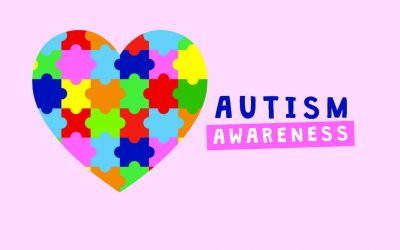Questions for article by Donna Williams
1. How works your immediate processing of a message ?
This has changed over time. Before the age of nine I had about 10% interpretive processing which means I was essentially meaning deaf. I had to rely, like a dog, on mapping pattern, theme, feel and I became so excellent at this that it replaced much of the need for receptive language. At around nine I began to understand 3 sentences in a row and by my mid twenties had about 50% receptive language processing- so like someone foreign learning the language. By my 30s, thanks to dietary intervention, I had about 50-70% and now it is about 70% most of the time. Several things effected my ability to process a message, the segments between words were all in the wrong places- as if the volume was being turned on and off. The words came in tumbled sometimes so they didn’t sound in the right order. And on top of this no pictures happened with many of the words- I’d have the same processing problems with visual meaning so the links between words and mental images has been a great problem. Instead I process words via their movement and acoustics so ‘home’ is the movement of my front door and the creaking, computer is the movement of typing and the sound of the keys tapping or the computer starting up (the first is the experience of using the computer, the second is the article on its own). Anyway, this process leaves many words without meaning (if people use gestural signing, my interpretive processing is much better and sometimes I’ll use it to keep up with ‘translating’ what they are saying). I also became programmed to store the unprocessed language which would be processed beyond conscious awareness and could later be triggered out of me- hence my typed expressive language was brilliant but hidden throughout childhood even though I was limited verbally and especially receptively.
2. In which way your communication characteristics have an influence on your interpersonal relations ?
I spent lots of time with my close friend- my reflection, I made best friends with my internal ‘friends’ who were dissociated parts of myself (my logical self- called Willie, and the projected version of who I might have been without the challenges of my autism- called Carol). I found that the children who drew close to me were often second language speakers who couldn’t mix with others because of the language barrier but with me this wasn’t a problem (or they had other significant social-emotional issues). I also had an anxiety condition I call Exposure Anxiety which caused involuntary avoidance, diversion, retaliation responses, so it was very difficult to respond to the initiations of others without these involuntary self-protection responses taking over my behaviour and controlling my communication- so expressively I could be strange. This is now managed with a combination of diet, supplements and low dose medication which treats involuntary behaviours and anxiety.
3. Are there different moments in which your understanding of the communication works better or worse ? If yes, why ?
There are three separate issues. One is the delayed processing problem- language simply comes in too fast or too diverse, or without gestural signing etc so the meaning falls out. Another is after 9 years relying almost solely on sensing, my brain is not well trained to maintain attention to interpretation and it doesn’t feel ‘natural’ to rely solely on interpretive processing even though I’ve learned to ‘do it’. Thirdly, the Exposure Anxiety condition made it too socially invasive to allow the external world to connect directly with my own world so it self-protectively shut me down before and even when it didn’t, I was so distracted by controlling my involuntary avoidance, diversion, retaliation behaviours and responses it was very difficult to concentrate and relying on conscious processing was not my forte, I worked much better when able to process preconsciously but the world socially doesn’t dialogue this way, it does so in a directly confrontational way.
4. As regards to TV, radio or press advertising and programs, which is your understanding of them ?
I mapped them. I knew them by pattern, theme and feel. I hadn’t realised that interpreting them was important. Having a feel of them and the theme of the message was more important. So a fly spray commercial could be a way of saying ‘oh no, I’m in trouble’, a commercial for dishwashing liquid meant ‘don’t worry, it will be good for you’…. It was as though I would cut through the words to the theme and feel of the message- very different to many people with Asperger’s for whom the interpretive message is what they focus on and are often oblivious to the theme or feel. When I focus on interpretive meaning, I’m like someone with Asperger’s but I often revert to my own system of ‘sensing’ where I get more meaning deaf and meaning blind but I can map the pattern, theme and feel well so I feel more ‘included’. I think this has been an advantage. Life isn’t flat or cardboard to me, its very rich. Holding onto the surface stuff is a challenge. For many people with Asperger’s, the surface stuff- the world of literal meaning (but where processing of the significant can be rather lost) hasn’t got a lot of depth and its all they have.
5. What would you say to someone who would like to communicate with a person with autism or PDD ?
That there are a diverse range of ways to communicate and not to be put off by the appearance of involuntary behaviours nor the apparent lack of conscious awareness of interpretive meaning. In spite of the inability to process in the moment, much of delayed processing is processed preconsciously outside of the moment so it is important to find ways, not to ask the person to access this consciously but to trigger these responses out of them on a preconscious level. That can be something as simple as FC, leaving a typewriter about, through art, dance, through leaving activities part finished, through intentionally leaving something out of place to trigger correction, through reliance on multiple choice so all the answers are there and the person just has to grab the one which ‘clicks’ whether they know it is right or not, through using statements to provoke rather than questions requiring retrieval, speaking through pattern/theme/feel, reliance on song and actions, by communicating via objects rather than in a directly interpersonal way…. The list goes on and on. Its diverse. The thing is don’t get weighed down by the label. Seize the situation as an adventure and a challenge to be humorous, surreal, creative and self owning and look not to teach but to inspire, not to chase, but to inspire others to chase sometimes by leaving them wanting more and playing hard to get, leave things lying about to be discovered within their own world and don’t pounce on every opportunity, let people have the time to make learning ‘theirs’ before assuming the right to ‘invade’ or ‘share’ it.
Donna Williams is the author of six published works including the bestselling autobiography Nobody Nowhere, its sequels, Somebody Somewhere and Like Color To The Blind (with a fourth sequel, Everyday Heaven currently with the publishers!) as well as three text books: Autism; An Inside-Out Approach, Autism And Sensing; The Unlost Instinct and her latest, Exposure Anxiety; The Invisible Cage. All can be found, as well as her music and artworks, on her website www.donnawilliams.net


